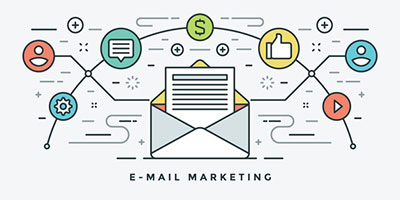Smart B2B companies are focused on increasing customer lifetime value and email marketing is a key strategy to doing this well. Companies doing it well typically generate 10-20% of their revenue from email marketing. Unfortunately, many companies are not using email effectively in their marketing, and it’s a huge missed opportunity.
A well-designed email marketing strategy enables you to increase the ROI from the leads generated by your other marketing efforts. Here are some email marketing best practices to consider as part of your eCommerce strategy.
Have Multiple Opt-In Opportunities
First, it’s important to have multiple opt-in opportunities or ways for users to join your list. You should have a way for people to join your list on every page of your website (in the footer). You may want to consider using an exit intent overlay/interstitial inviting them to join your list. (If you aren’t sure what this is, you will see one when you start to leave our site.) Interstitials can be effective if they are implemented correctly but also can create resentment if they are poorly designed. Make sure to work with someone who has experience in interstitials and measure the impact on your Key Performance Indicators (KPIs).
Have an opt-in opportunity as part of your checkout process, and make sure that they are automatically added to your list.
 Capitalize On the Initial Engagement
Capitalize On the Initial Engagement
Prospects are most engaged when they first sign-up, so make sure to send an email right away. People are more likely to purchase from you within 24 hours of joining your list if they get an email that has a well-crafted incentive for purchase. This email can be automated and is a critical piece to establish trust in your brand.
You can also consider using a welcome series of emails that go out automatically over the course of a few days or weeks to leverage the most engaged time for a new prospective customer. I’ve seen companies who collect email addresses but don’t do anything with them for days or weeks or even months, missing out on a huge opportunity to connect with prospects when they are most interested.
Set Up Triggered Emails
Triggered emails get their name because they go out based on the behavior of the website visitor. They can be triggered by things like customers abandoning their cart, by a lack of purchase over a certain period of time, by purchases they have made (recommending related items), or by interaction with site content that indicates interest. Designing triggered emails is both science and art, as it requires a technically analytical mindset, a knowledge of best practices, and creativity to stand out from other emails your customer receives.
Leverage Transactional Emails
Transactional emails have a much higher open rate than promotional emails, making them a great opportunity to generate more revenue. Transactional emails include things like registration confirmation, password reset emails, purchase receipts and shipping tracking emails. The primary intent of transactional emails needs to clearly be around the transaction, but you are able to have some promotional messaging in the email. Bronto suggests following an 80/20 rule with 80% of the content being transaction-related and up to 20% being promotional, to comply with CAN-SPAM regulations.
Send Email Consistently
Too many companies have a large list of emails from customers and prospects but rarely send anything to them. It is important that your customers hear from you regularly to build visibility and trust. Consider some kind of email newsletter with helpful content that goes out regularly. This could be anywhere from once a week to once a month, depending on your customers and your marketing resources.
Use Effective Email Marketing Software
There are many email software platforms on the market, and the great news is that you don’t necessarily need to invest in an expensive email marketing system to accomplish these things.
One option for marketers is MailChimp. While MailChimp used to be perceived as a solution for small businesses, with their new API and Mandrill for transactional emails, you can implement powerful marketing with a relatively low ongoing cost. In working with MailChimp’s API, I have been impressed with the capabilities available for abandoned cart emails, post-purchase emails, and custom workflows.
MailChimp is just one example and isn’t the right choice for everyone. If your site is built on an enterprise content management platform, they likely offer email marketing tools that can offer benefits. (Our favorite enterprise CMS and commerce platform, Episerver, offers tools that enable strong email personalization benefits.) Or you may have a CRM that has an email marketing component that you want to leverage. Figuring out what platform is right for you will depend on the size of your business, the products you sell, and your company goals.
The majority of companies I talk to are underutilizing email. Improving your email marketing gives you an opportunity to increase your customer lifetime value and improve the ROI of your B2B eCommerce. If you would like some help setting up automated email marketing systems for your business, reach out to schedule a time to chat with us.
